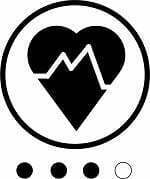GRAMPIANS HUT TREK
TRIP NOTES
What to Expect
You will be hiking through a beautiful landscape that is usually quite dry and arid. For us to traverse the Grampians Peaks Trail from the road north of Mt Difficult, all the way to Halls Gap, we must hike to an altitude of 806 meters. The trail itself is well maintained, however, it is rocky and at a couple of locations, you may be required to scramble over some rocks.
The average day of hiking consists of approximately 13 kilometres, which will take you about 6-7 hours including a place to stop for lunch and tea.
Accommodation will be in beautiful Signature Hiker’s Huts, 4 to a room and each bed has a foam mattress.
Dinners are a delight with pre-dinner aperitifs and maybe a drop of red or white from a local producer.
This is a great trek through the Australian bush and landscape, filled with wonderous natural beauty and ancient history.
Accommodation
While we will be walking the same trails as everyone else on the GPT, at the campsites we will be staying in the Signature Hikers Huts. These huts consist of 4 bunk beds with comfy foam mattresses. There is ample room for your bags and to spread out a little.
Each hut is tucked away in a private location with incredible views of the landscape outside. The sliding doors at the front have mosquito netting as do the walls, floor and ceiling.
All in all, this is very comfortable hiking accommodation. You will love it!
Getting There And Away
Halls Gap
Halls Gap is about 3 hours west of Melbourne. This expedition starts in Halls Gap where we will all meet on Day 1 at 9 am near the Post Office in town. From there we will be transferred to the trailhead near Mt Zero to start our trek. At the end of the trek near Dunkeld, we will be picked up and transferred back to Halls Gap where we can either catch public transport back to Melbourne or head home by car.
Packing for Your Trek
Equipment
Fabrics? No Cotton!
When heading out into the Australian bush where the weather can change at any moment, cotton is bad. When it gets wet, it draws warmth away from your body, making you colder, it also takes a long time to dry. It is best to stick with synthetic fabrics designed for the outdoors, or modern merino wool. Merino garments are a little pricey compared to other synthetic fabrics, but the technology they use to weave wool is incredible, you can’t even tell it’s wool, and it doesn’t stink even if you do! Obviously, the no cotton rule is only for the trekking phase of our trip, you can wear what you like at night around camp!
Waterproofs
Rain gear can vary from $20 to $1000 for a jacket alone. There is no need to spend silly amounts of money, but if you’re looking to invest for future trips as well, it is highly recommended to get good quality, breathable and windproof rain gear! We suggest any brand of waterproof breathable textile, over a plastic or nylon laminated type that won’t breathe or be as durable. But as said, there’s no need to go overboard with anything too expensive if you only plan to use it this one trip.
Personal First Aid kit
You should bring and carry with you a small personal first aid kit. This kit should be designed to take care of the small maintenance type things that most people will need to address during a long trek. This includes items such as blister dressings, bandaids (plasters), tube compression bandage (or knee/ankle brace if you’re prone to joint problems), sunscreen, lip balm, throat lozenges, antiseptic cream, etc. Your guide will be carrying an expedition first aid kit that is designed to handle any accidents or emergencies we encounter, therefore your personal kit doesn’t need to be over the top!
Pack weight
For this trek, we’ve endeavoured to take care of a lot of things for you, minimising how much you’ll need to carry but you’ll need to carry your own personal belongings. There is a list below to help work out exactly what you’ll need. Ideally, you won’t need to carry more than about 9-12kgs and you should be able to fit everything into a backpack of around 85-100L in size. If you’re buying a backpack, make sure you get one with a decent frame and harness so you don’t carry the weight on your shoulders!
Personal Items
Footwear
- Hiking boots or sturdy trail runners
- 4 pairs of hiking socks
- Pair of sandals or crocs for nighttime in camp (optional)
Clothing
- 1 set of clothing to hike in (shirt and shorts/pants)
- 1 set of clothes for nighttime (pants and thermal top)
- Warm jacket. (something warm and light/packable – heavy fleece or light down jacket)
- Waterproof rain jacket and pants
- 3 pairs of jocks
Head and hands
- Sun hat
- Baseball cap or wide brim if you don’t have a collar
- Warm beanie (optional)
- A neck warmer or ‘buff’ type multipurpose headband (optional)
- Sunglasses
- UV resistant and polarised are recommended
- Sunglasses strap. Too many pairs of sunglasses have been donated to the trail on treks to not recommend these strongly!
- Warm gloves (optional)
Sleeping gear
- Sleeping bag
- Sleeping clothes (optional)
- If anything, your spare/night time thermals work well to save doubling up and bringing extra clothes. The sleeping bag is where you will get the warmth, although wearing your base layers can make it much more comfortable.
Health and hygiene
- Personal toiletries
- Toothbrush/paste
- Wet wipes or antiseptic hand gel
- small facecloth
- Feminine hygiene (if required)
- Sunscreen (min UPF 30+)
- Lip Balm (or paw paw cream from your first aid kit)
- Personal Medications
- Pain killers (whatever works for you)
- Anti-inflammatories
- Gastro-stop (or similar)
- Throat lozenges
- Anything else you think you might need
- Personal first aid kit
- This is for general first aid maintenance and doesn’t need to be huge. Blister dressings, bandaids, paw paw cream, your above medications, burn/bite/antiseptic cream etc.
- Waterless hand sanitiser
- Toilet paper
Trekking gear
- Hiking Backpack 85-100L, comfortable, ideally with a frame for support
- Trekking poles (optional)
- Ability to carry 3L of water (2L bladder and 1L bottle preferred)
- Lightweight quick-drying towel (optional)
- A few small accessory carabiners (handy to clip drink bottles etc)
- Head Torch with spare batteries
- Waterproofing system
- Dry bags, large heavy-duty garbage bags (bring a few spares!)
- Camera! (optional)
- 1 x awesome attitude (this cannot be hired, must be brought from home)
Note: If you have any questions regarding the above list or any other items that you want to ask about please do not hesitate to contact us. We can provide you with additional information at any time.
Supplied Equipment
- All cooking equipment
- All eating utensils including bowls etc
- Additional First Aid Kit
Guided Tour
Our Local Guide Team
Our Grampians Hut Trek is guided by one of our well trained, engaging and informative local guides. He or she will give you a greater appreciation of the landscape you are walking through, provide a historical context at certain sites and point out culturally significant areas as well.
Our guides are also great companions, ensuring that your welfare is taken care of. They will ensure that trekking conditions are safe, provide alternatives if need be, understand the weather and the terrain and how they interact and generally make sure you have a safe and rewarding journey.
Without a guide you are only seeing and understanding a fraction of the significance of Gariwerd and the ancient landscape you are travelling through.
Map Of Grampians Hut Trek
The map below shows us the general course of the trail. This is a great representation of what the main campsites and mountains we traverse.
Expedition Grading
High Heart Rate Holiday


On our Expedition Grading, the Grampians Hut Trek falls somewhere between a Balanced Break and a High Heart Rate trek. Our Balanced Break is just that, a balance between activities and some downtime with great food. However, this trek is a little more challenging than that, as the Grampians Peaks Trail does have a few steeper sections and some of the trails, while well maintained, need your attention. Distances, while not excessive, do take a while to traverse due to the undulating terrain and nature of the trails themselves.
Fitness
Physical: For this trek, you will require an above-average level of fitness. We cover on average about 13 kilometres each day, with some days having large altitude gains or losses. Like any trip, the fitter you are, the more you will enjoy it!
Fellow Hikers
We ask you to be understanding of the various needs and preferences of your group – patience with your fellow travellers is sometimes required for the benefit of everyone’s travel experience. Remember too that you have responsibilities to the group. If you are requested to be at a place at a certain time, ensure that you don’t keep the rest of the group waiting. We have found time and time again that the very best trips we operate are those where the dynamics within the group work well – this takes just a little effort on your part.
Immunization
COVID 19
All guests are required to be full vaccinated against COVID-19
We Are Here To Help!
We have tried hard to provide you with a greater insight into this expedition but we ain’t perfect!
If you do have further questions please contact our expert team members through one of the below channels.
No Roads Expeditions Support Hub
Australia HQ: +61 (03) 95988581
Email: info@noroads.com.au


